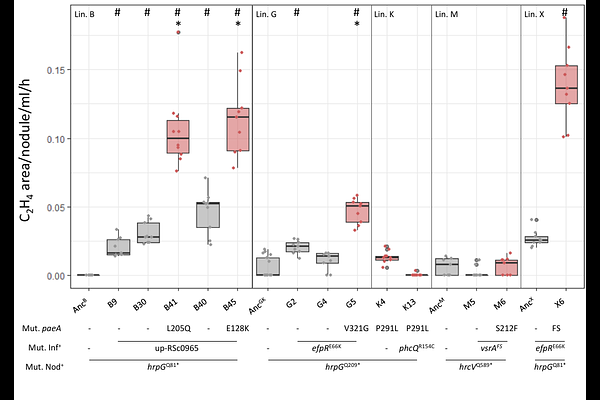Disruption of putrescine export in experimentally evolved Ralstonia pseudosolanacearum enhances symbiosis with Mimosa pudica

Disruption of putrescine export in experimentally evolved Ralstonia pseudosolanacearum enhances symbiosis with Mimosa pudica
Cazale, A.-C.; Navarro, M.; Doin de Moura, G. G.; Hoarau, D.; Bellvert, F.; Valiere, S.; Baroukh, C.; Remigi, P.; GUIDOT, A.; CAPELA, D.
AbstractPolyamines are essential molecules across all domains of life, but their role as signaling molecules in host-microbe interactions is increasingly recognized. However, because they are produced by both the host and the microbe, their dual origin makes their functional dissection challenging. The plant pathogen Ralstonia pseudosolanacearum GMI1000 secretes large amounts of putrescine both in vitro and in the xylem sap of host plants. In this study, we investigated the genetic changes underlying its experimental evolution into a legume symbiont. We showed that the paeA gene (RSc2277), which was repeatedly mutated during this process, encodes a putrescine exporter. Mutations in paeA completely abolished putrescine excretion in vitro and enhanced bacterial proliferation within nodules during interaction with the legume Mimosa pudica. When these mutations occurred in symbionts already capable of intracellular infection, it further increased bacterial load in nodules and allowed the detection of nitrogenase activity. In addition, paeA-mutated symbionts modulated host gene expression towards a more functional symbiotic state by repressing defense-related genes and inducing nodule development genes. These nodule development genes include genes encoding leghemoglobins and an arginine decarboxylase, a key enzyme in plant putrescine biosynthesis. These results indicate that bacterial and plant putrescine have distinct functions in legume symbiosis and highlight the complex role of polyamines in plant-microbe interactions.